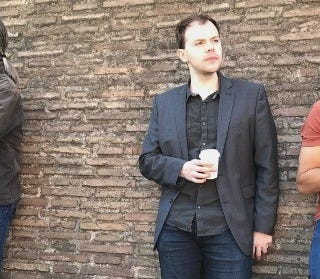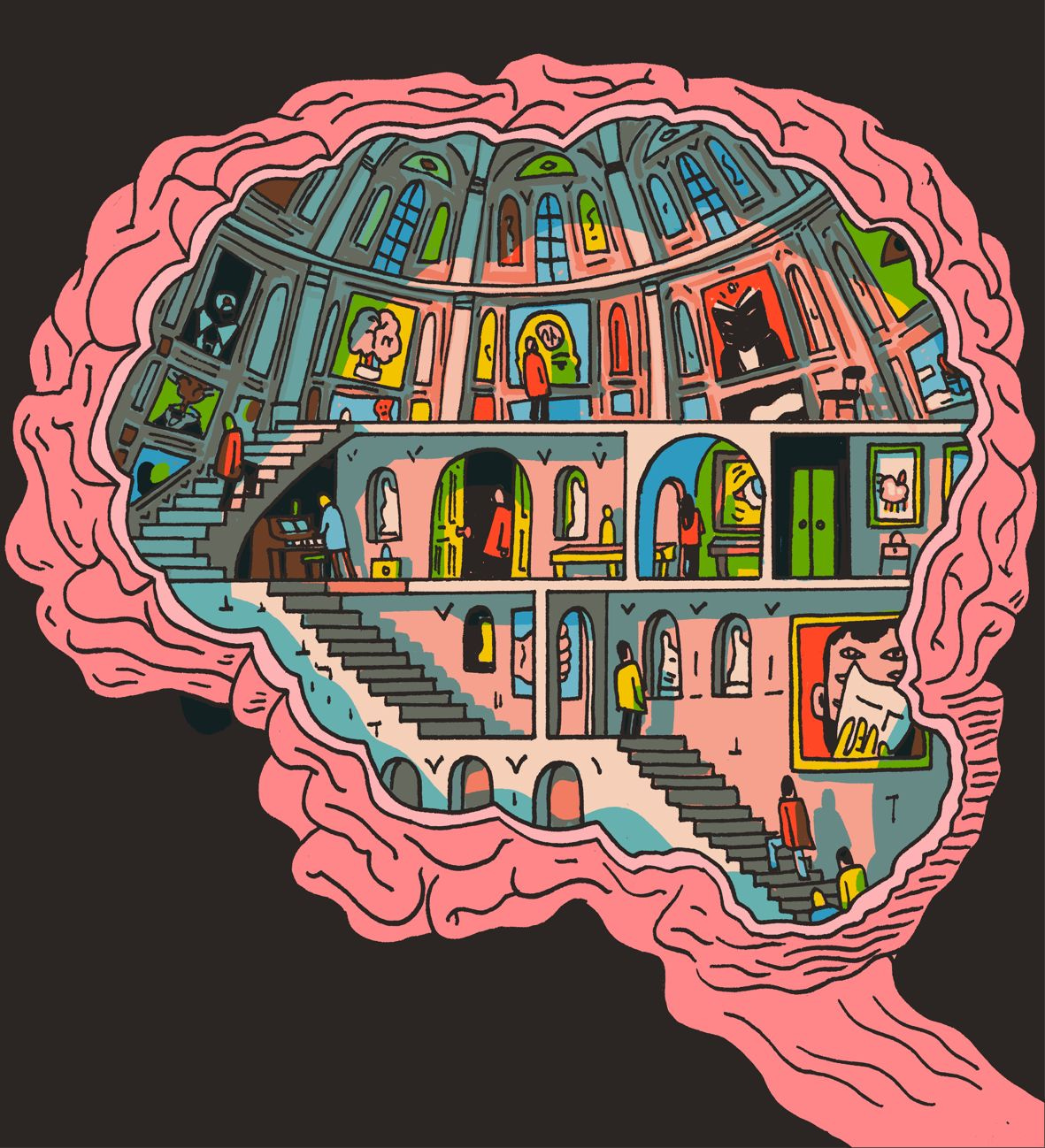In 2025, blogs will be the last bastion of the Good Internet
Celebrating 52,000 subscribers for The Intrinsic Perspective
Late last year, The Intrinsic Perspective breezed past 50,000 subscribers. Given the scale of the internet, this website is no vast peak, but for a lone author, I deem it a success. The Paris Review, a literary magazine I grew up reading, has 50,000 subscribers. Running a marathon takes about 50,000 steps. Go 50,000 miles in a straight line and you will travel twice around the Earth.
A rising tide lifts all boats, and the rising tide that drives people to blogs is that they're one of the last bastions of the “Good Internet.” Social media has become a chore. You get to choose between the banality of censorship or The Elon Show, and there’s nothing in between. There are still nuggets of gold on your feed but the work of panning for them gets ever more tedious. Brain fog sets in quicker now, thanks to the auto-playing micro-videos. The convergent evolution of platforms toward TikTok continues apace. Outside the windows, AI slop proliferates like an endtime weed; it’s now found in almost 20% of websites.

We can be happy, at least, that what gets to survive is one of the more aesthetically promising mediums. As I wrote years ago in “Writing for outlets isn't worth it anymore:”
Why write essays online like this? The truth is most people wake up and the first thing they do is look at their phone and read. What they read is not a book. Neither fiction nor nonfiction tomes, nor poetry nor autobiography, no, nothing like that at all. They’ll read social media posts, they’ll read news articles, their emails, sports summaries, they’ll browse Instagram posts or go through comment threads. But they’ll also read an essay. Right away, right with their heads still on the pillow. Do you know how powerful—really powerful—that is? This fact is somehow both common knowledge yet woefully unacknowledged. The essay is the native written artform of the internet.
That’s truer than ever in 2025, and a big reason why I’ve already written 200 posts—most illustrated, luckily, by resident artist Alexander Naughton’s keen and playful style. In eight more years, I’ll have written over 1,000.
Personally, it’s a bit funny, because as a writer the authors I always admired were people who could do things rarely but perfectly. One perfect book. One great leap. A short story so beautifully carved it was like handling porcelain. Ideally, after writing such a thing you’d go insane or drop dead, getting your fleshy self out of the way of your creation.
Switching to blogging involved changing styles and expectations. Blogging is about quantity and maximalism. It requires not so much the analytical skills of a maximally-refined aesthetic sense, but rather a kind of robust artistic vitality. It rewards sanity and schedules and physical therapy for your tendons.
The right analogy is to works of art that embrace maximalism, or “logorrhea,” as the ancients called it. In fact, you could say that the entire internet is one massive victory for maximalism.
So to take inspiration going into 2025, we might as well crane our necks to look at the greatest maximalist work of all time: the Sistine Chapel. Which remains my favorite “painting” I’ve personally seen in my whole life. And I know saying this is cliched. It's like saying your favorite band is The Beatles or Taylor Swift. It's what people who don't know anything about art might say, if pressed. For the Sistine Chapel is, admittedly, a tourist trap. You wait in line for tickets as early as possible to avoid the crowds, drinking a coffee and smoking a cigarette in the religious bustle of Rome at dawn.

Once inside, you don’t go directly there. Instead you shuffle-walk through the Apostolic Palace where the pope lives, moving past one ornate display after another, winding around as if the chapel is the center of a labyrinth and you must perform the sacrament of approaching it from every direction before entering. Backpacks are everywhere, people move in groups and corral children. But then you get inside the Sistine Chapel and it's silent. No cameras are allowed in the room, which is empty except for plastic chairs that line the sides. You either stand and crane your neck to look up, or you get lucky and find a chair to sit down in. There are low murmurs and whispers, but the sound echoes, and everyone is afraid of disturbing the images—or rather, of disturbing the reactions to the images unfolding inside each viewer.
The experience is one of overwhelming maximalism. There are so many details, so many panels. You're buried by it. Your eyes are overwhelmed, saccading from one scene to the next. That's why all the images of the Sistine Chapel are of only a few famous sections, like God and Adam's fingers almost touching, etc. But none do it full justice. It's a work of art you can only look at in parts. The truth is that every part is incredible, so no matter how long you sit there, you won't have seen it all. When you're confronted with that kind of work of art, one so big and so vast you can't take it in all at once, it makes you realize your whole conscious life has been experienced as fragments through the periscope of your eyes.
Going to the Sistine Chapel made me realize that a work of maximalism succeeds when it triggers this property in the experiencer. You know that the whole is there, but you can't see it all at once. You can only take it in sequentially. It is the awareness of an emergent form you, as a limited being with only a periscope for perception, cannot actually understand in full.
And this same reaction of “I don’t even know where to look, or where to begin” in the viewer (here, reader) is what I think the very best of blogging should strive for. For you can't read a very good blog all at once. It is the creation of something so ridiculously large in scope that you can only take it in a little bit at a time.
This is why Substack’s focus on email was more defining and important than even the founders knew, and why it triggered the new Silver Age of blogging. In Michelangelo’s chapel, it is the use of space by the artist that creates the overwhelming effect; filling in such a complex topography means there is detail in every curve and window and feature. In blogging, it is not space that separates the pieces, but time. One email update, one short read, one consideration, one detailed panel. Above it all, the ghost of a greater presence hovers unseen.
In 2025, I want to feel more ghosts of greater presences, here in the last mottes of the internet. It’s time for bloggers to step up.
If a chapel be too grand an analogy for something so lowly as a string of emails, another analogy for art via maximalism is in reach, thanks to the holidays. For I maintain this: the best Christmas trees are ones filled not just with beautiful baubles, but trinkets, remembrances, a mold of a baby's handprint, the hanging picture of a long-dead dog. We can't all be Michelangelo. But so many of us are now in the process of taking down the little maximalist Christmas trees we decorated.
Pick your analogy, the humble or the highbrow, but regardless, I think it’s time for me to step up too. Taking all this to heart, going forward in this new year, expect from me more detailed panels, more experiments, more oddities, more attempts (for the word “essay” comes from the French essai, which means “to try”). Of course, continue to expect the sort of scientific and cultural analysis you're used to. It is good to be grounded, good to be useful and relevant. Sure. But it is good to be more than that too.
For if not us, who? If not now, when?





Erik, there is great stuff here, and I appreciate your thoughts on it. This is the only place people can find me on the Internet. I left the other social sites behind and have no regrets. I love the community here, the in-depth discussions, and the opportunity to share meaningful discourse with others. I am one year into writing on Substack and it was the best choice I could have made. Looking forward to what is in store for us.
This is great but also a little sad -- because i hunger for the occasional perfect things and feel increasingly out of step with a world that prefers a constant firehose of product that's only okay.